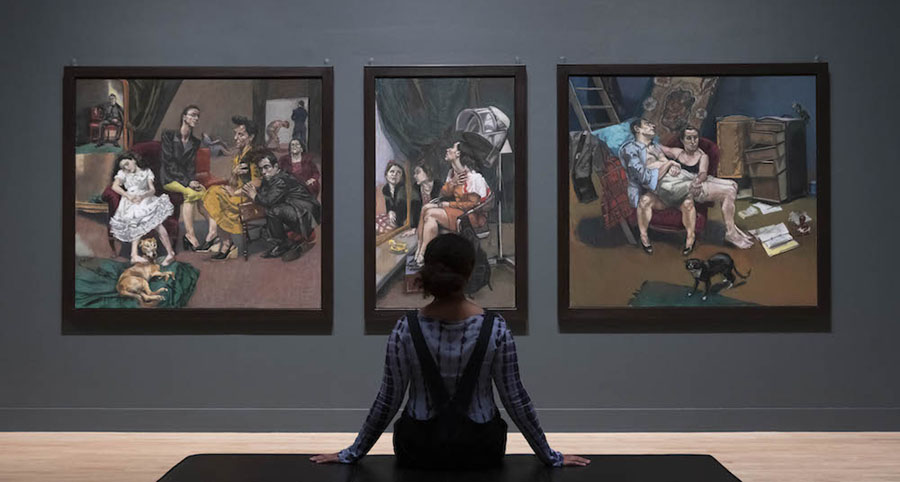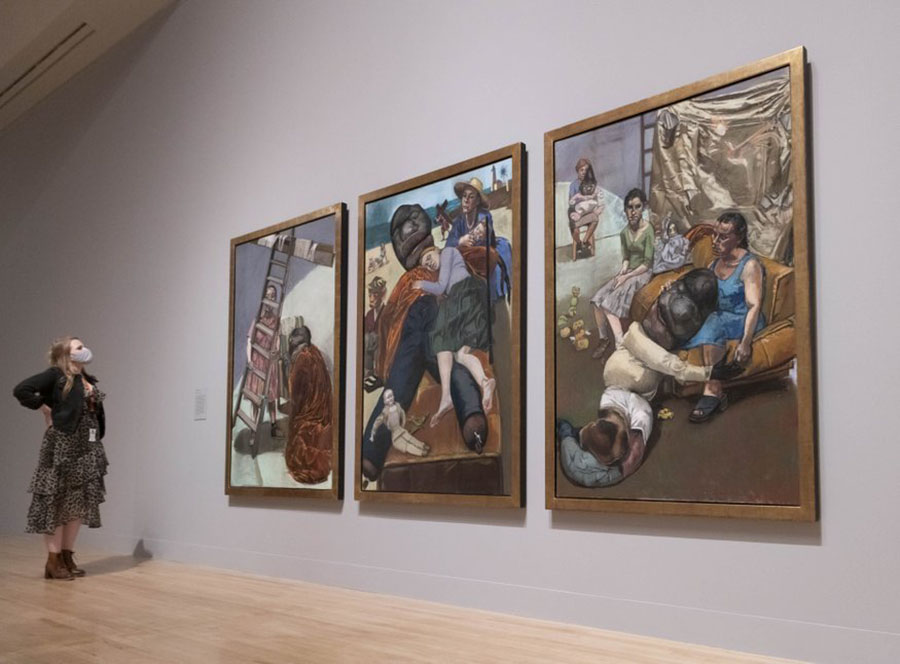“a fearless cry from the rooftop of what it is to be a woman, an artist and a human all at the same time.“
Exhibition Review by Cadi Froehlich LG

The celebrated retrospective of The London Group artist Paula Rego at Tate has been described in terms such as deep, dark and disturbing, so I approached with a robust attitude and open mind.
I need not have worried. I wonder at how such extraordinarily striking accounts of a brave woman’s life have raised concerns – to me this felt like a fearless cry from the rooftop of what it is to be a woman, an artist and a human all at the same time.
It always seems a bit of a shame that retrospectives happen so late in an artists’ life: whilst it is obviously necessary to wait to get the fullest view possible, it feels as if it leaves too little time to then celebrate and cherish the artist.
I hope Paula Rego feels celebrated and cherished when she looks at her collected works, although she strikes me as an artist who rarely sits back on her laurels, so I suspect she is already swimming in thoughts of the future rather than dwelling on the past.
The opportunity to see her chronicle her life through her work was a delight. It made for heavy-hearted viewing in places, but only in the recognition of her struggles as a woman, and in her acceptance and determination to portray these struggles and concerns throughout her work.
A childhood cut short, a choice of career far from finishing school, a political life informed by hard personal experience, a rallying cry for what it is to be a woman alive and attuned to the world – all was on view here, in varying mediums which I believe were selected according to the subject.
As someone who thinks in 3D, I am fascinated by the painting as object, as well as the subject portrayed. It seemed that the initial move from oil to collage was a natural furthering of the abstraction of ideas in the abstraction of materials and surface. This quicker method for layering works seems to have fed into the acrylic series leading up to The Dance. In acknowledgement of the challenges to working through family illness and death I wonder if this series of paintings from 1986 to 1988 were executed in acrylic as the conceptual clarity behind them allowed for more focused production.
This clear move into the allegorical representation of life from childhood to death seems to me to be both a peak and a catalyst for the next chapter, which became more collaborative. Her illustrations of folk tales, residency at the National Gallery and consistent relationship with her model Lila Nunes must have been welcome support in dark times.
I was particularly struck by ‘Dog Woman’ from the early days of this intense collaboration with Nunes. Previously, every character depicted by Rego appears to be close-lipped. Emotions and intentions are depicted through facial expressions and pose. In Dog Woman, the figure roars, open mouthed and fearless, and though raw and animalistic, I found this moment of release joyful and exciting.
This series also marks Rego’s move to pastels which seem to magnify the energy and determination in the work.
This room of female figures leads to a space which displays Rego’s works highlighting the affect political decisions have on the lives of women and their reproductive rights. These commanding canvases are certainly sobering viewing, though again not surprising as a reality – the surprise is that these issues are being presented head-on by a woman who has reached the peak of her career and is still striving to make the world a better, fairer place.
Like her contemporary Louise Borgeouis, Rego refuses to shy away from painful or controversial subjects, and the path they have forged for subsequent women as artists and members of contemporary society should not be underestimated.
Cadi Froehlich LG, 2021
www.cadifroehlich.com
PAULA REGO
until 24 October 2021
TATE BRITAIN
Millbank
London SW1P 4RG

